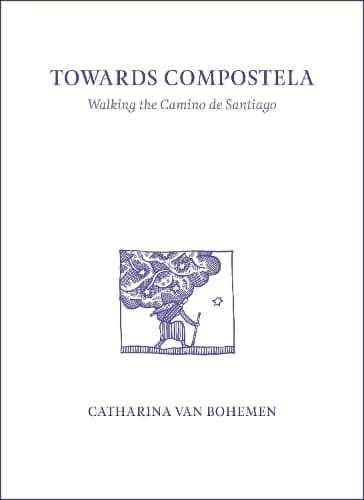Review: Towards Compostela: Walking the Camino de Santiago
Reviewed by David Herkt
A pilgrimage is a ritual of ancient origin, part physical travel and part spiritual journey. Five thousand years ago, Stonehenge was the focus of one. Later, there were numberless Greek shrines, including Delphi and Eleusis. The Islamic Haj still centres on Mecca. Christian destinations include Canterbury and Santiago. Located far up New Zealand’s Whanganui River, Jerusalem is still a destination for those affected by the example of the Catholic poet, James K. Baxter.
Catharina van Bohemen’s Towards Compostela: Walking the Camino de Santiago is a journal of a contemporary pilgrimage. It is both a day-by-day account and a meditation on the meaning of the act. Beginning at a time of personal crisis, when her marriage struck problems, van Bohemen booked a ticket from Auckland to London with the intent of undertaking the Camino de Santiago. ‘How can you see your life unless you leave it?’ she quotes from the Canadian poet Anne Carson, who had herself written about the Compostela journey.
Van Bohemen has previous published short essays as well as writing the libretto to Peter Schole’s opera, The Tale of the Birdcatcher. Generally using compact forms, her miniatures frequently take on an import beyond their length. In Towards Compostela, she makes the fragment and diary-form her own. The book is the compound effect of many perspectives and moments. While the pilgrimage provides the structure and grounds the narrative, the ultimate illumination lies in the cumulative detail.
There have been many accounts of pilgrimages, from Chaucer’s Canterbury Tales to W. G. Sebold’s more recent and secular The Rings of Saturn. Van Bohemen uses that written history to her advantage. Quoting from scores of works, Towards Compostela is a rich mix of past and present. Van Bohemen gives a personal and practical insight into the long human tradition which has framed her own experience.
Filled with contemporary anecdote, van Bohemen’s book evokes both pilgrims and places. Stopping each night in a refugio or hostelry, and gaining yet another stamp in her pilgrim’s passport, she travels by foot exactly as did her Medieval precursors. Blisters, rain, and aggressive dogs are all part of the process. But it is on her companions that the focus inevitably falls.
These brief character sketches of people who have chosen for their own reasons to embark upon the 850km journey from France, across the Pyrenees, to Compostela on the Western coast of the Spanish province of Galicia, are probably the book’s highlight. Walked since the 9th Century, the pilgrims of the Camino de Santiago range from blogging tourists to others seeking personal meaning or religious revelation in the journey. They come from scores of countries.
Van Bohemen tells their stories – inasfar as she discovers them – along with the nights in crowded hostelries run by orders of monks, shared meals, walks in wild weathers and, inevitably, her memories of New Zealand. It is a fulfilling and thought-provoking mix. It is possible to feel a millennium-old but still-vital tradition.
Gregory O’Brien’s illustrations and fleurons are an unexpected bonus. Their bold lines and subtle colours are much more than decorative. Towards Compostela is a book of unexpected richness for a reader who is gifted with an experience not easily forgotten. Reading van Bohemen’s account ultimately becomes a performative pilgrimage itself.
Reviewed by David Herkt
See in New Books
